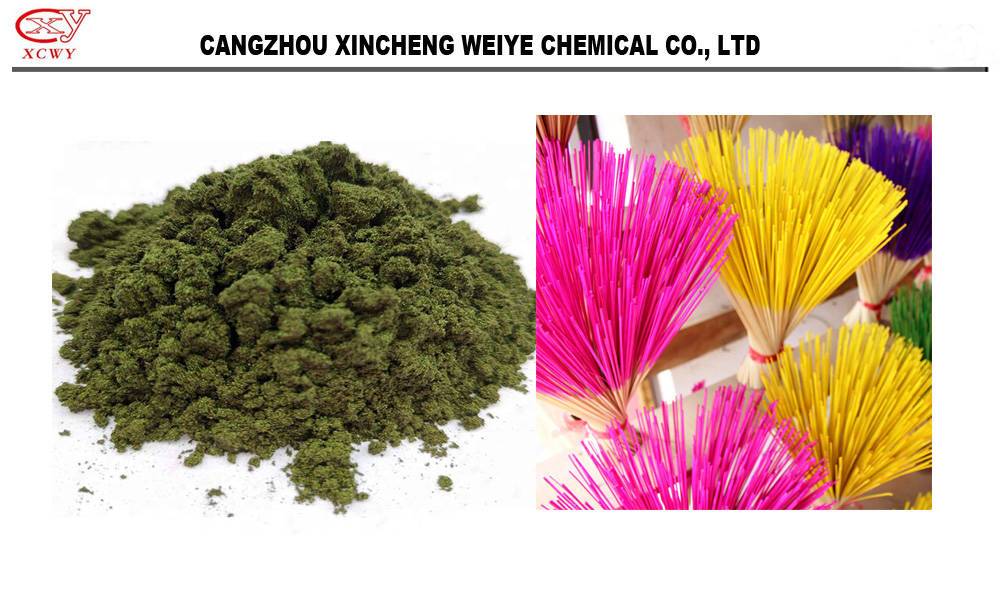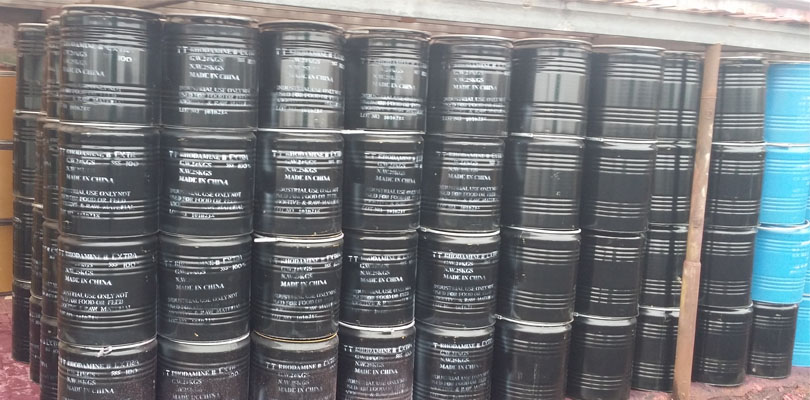Light fastness refers to the ability of dye color to resist light irradiation. It has a great relationship with dye structure, dyeing concentration, fiber type, external conditions, etc. How can we improve the light fastness of basic rhodamine B when we use basic rhodamine B for dyeing? In order to solve this problem, we will introduce the methods to improve the light fastness of basic rhodamine Bfrom the following three aspects.
[Select dyes according to fiber properties and textile use]:
For cellulosic fiber textiles, 310 Rhodamine B with better oxidation resistance should be selected; for protein fiber, dye with better reduction resistance or weak oxidation additive should be selected; for other fibers, dye should be selected according to the effect on fading.
In order to enhance the photo oxidation resistance of azo group in the molecular structure of basic rhodamine dye, some strong electron absorbing groups are usually introduced into the adjacent position of azo group in the dye synthesis process, so as to reduce the electron cloud density of azo group gas atom. In addition, it can also introduce human hydroxyl groups at two adjacent positions of azo group, and use its coordination ability to complex with heavy metals, so as to reduce the electron cloud density of azo hydrogen atom, and play a shielding role for azo group, so as to improve the light fastness of dyes.
[Select dye according to color depth]:
The light fastness of reactive dyes on cellulose fibers is directly proportional to the shade of the dyed color, that is, the darker the color, the better the light fastness. This is because the higher the concentration of dye on the fiber, the greater the aggregation degree of dye molecules, the smaller the surface area of the same amount of basic rosette dye exposed to air, water and light, and the lower the probability of dye photooxidation. On the contrary, the lighter the color is, the more disperse the dye is on the fiber, the higher the probability of light exposure, and the lower the light fastness. Therefore, the basic rhodamine B with high light fastness should be selected for light color varieties. In addition, many finishing agents such as softener and anti wrinkle finishing agent are added to the fabric, which will also reduce the light fastness of the product. Therefore, dyes that are not sensitive to these finishing agents should be selected.
[Color matching with dyes with good light resistance and compatibility]:
Different dyes have different fading properties, even the mechanism of light fading is different. Sometimes, the presence of one dye sensitizes the fading of another. In the process of color matching, basic rhodamine B which are not sensitized to each other and can even improve the stability of light resistance should be selected, which is particularly important when dyeing dark varieties such as black. If one of the three primary colors fades too fast, it will soon lead to the color change of the dyed fiber or fabric, and the fading dye residue will also affect the light stability of the other two dyes. It is an important way to obtain high light fastness to reasonably control dyeing process, fully combine dyes with fibers, and try to avoid the residue of basic Rhodamine dyes and unfixed dyes on fibers.
Contact person: Miss Jessie Geng
Email:jessie@xcwychem.com
Mobilephone/Whatsapp: +86-13503270825
Post time: Nov-26-2019







